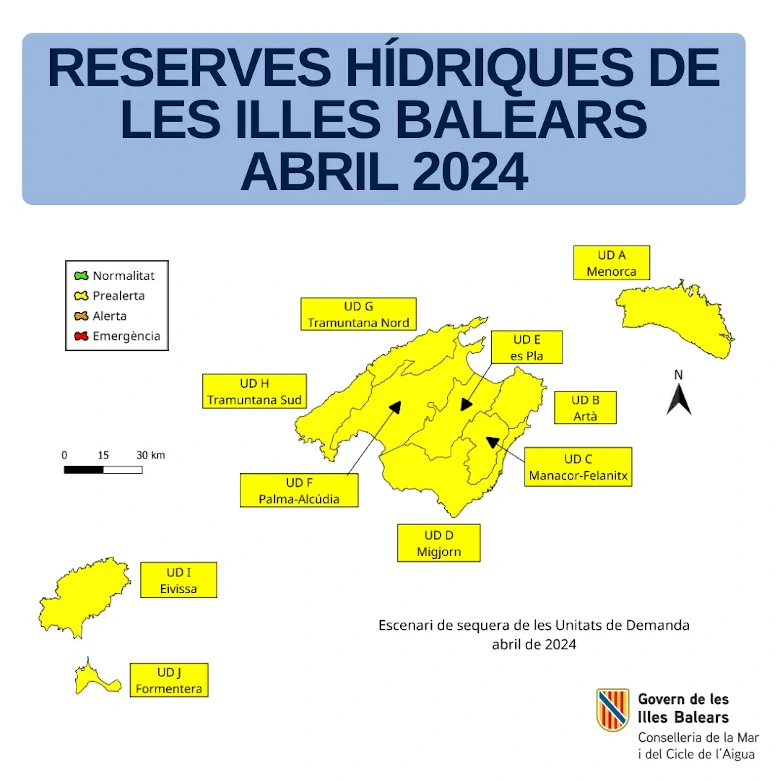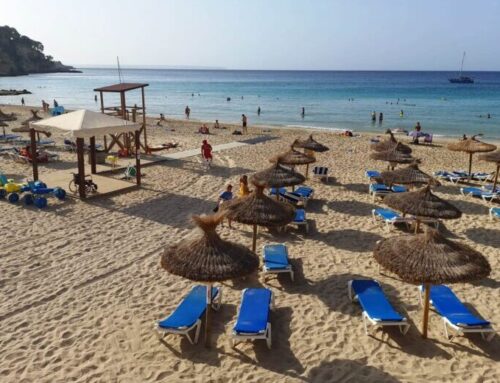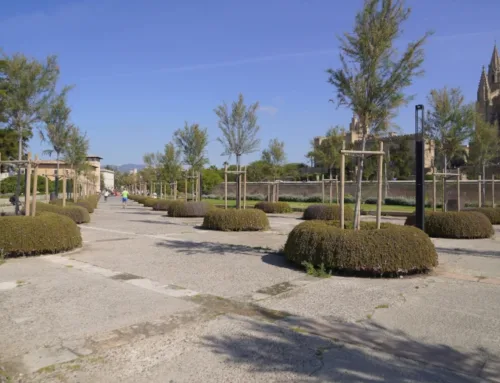Water reserves in the Balearic Islands stood at 53% in April, a fall of 9% compared to the same period in 2023 and 2% compared to March 2024. Despite the fact that the benefit of the latest rains in the archipelago has not yet been reflected in the aquifers, these figures reflect the need for “continuous vigilance”, according to the Balearic government. Not surprisingly, the entire archipelago is in a pre-alert situation.

Another worrying fact is that, during the month of April, most of the Demand Units (DU) experienced decreases, with the exception of Formentera, which recorded an increase in its bookings. By islands, Mallorca suffered a reduction from 57% to 55%, Menorca went from 54% to 52% and Eivissa from 39% to 37%.
Rainfalls
In terms of rainfall, April was a significantly wet month on the islands, with an average of 43.0 litres per square metre (l/m²), exceeding the historical average of 39.9 l/m².
Mallorca recorded less rainfall than the historical average, with 37.4 l/m² compared to 42.6 l/m². In contrast, Menorca experienced a wetter month with 48.9 l/m², compared to 34.8 l/m² of its historical average. Eivissa and Formentera had very wet months with 72.5 l/m² and 51.6 l/m² respectively, far exceeding their historical averages of 31.4 l/m² and 21.0 l/m².
Temperatures
April was also a very warm month in the Balearic Islands, with an average temperature of 15.3°C, representing a +0.8°C anomaly. With 100% of the territory in a pre-alert situation and no changes in the scenario expected in the short term, “it is crucial to maintain a prudent and proactive management of water resources to adapt to these climatic variations and ensure long-term sustainability,” the Balearic government said.







Leave A Comment